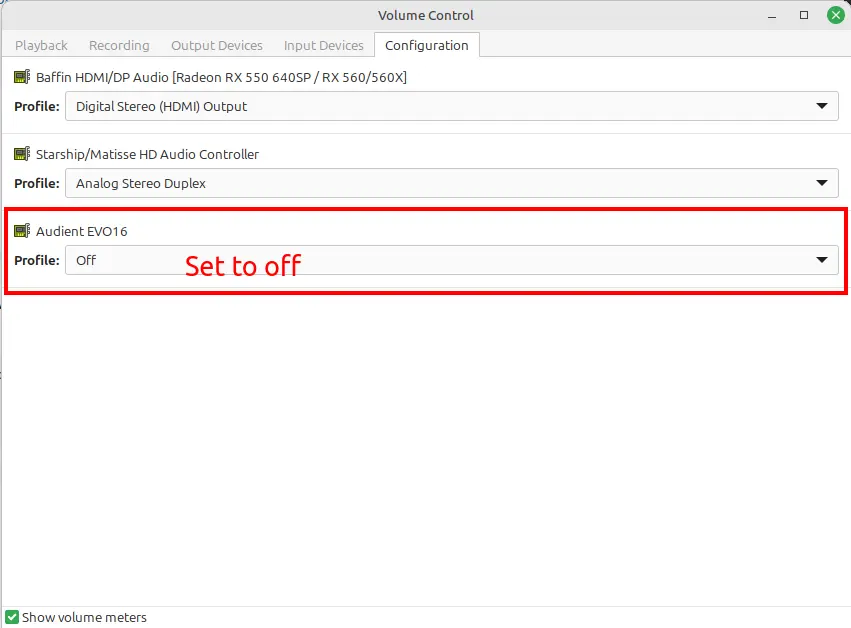Linux installation instructions
For installation under Linux, please make sure you have a compatible Linux version. The supported list is at System requirements section.
The commands below can be copied over using the mouse and the blue copy
button. And can subsequently be pasted in the terminal using the keyboard
shortcut <CTRL>-<SHIFT>-<V>.
After downloading the installer from the ACME download
page, run the following command in the
terminal, in the directory where the .deb file is stored:
sudo apt install ./acme_vX.Y.Z_amd64.deb
replace X.Y.Z with the appropriate version. After this, ACME will be
available in the Applications menu, and can be started as such.
note
The ./ is mandatory for apt to understand that it is a local
installation, not a package from the configured repository.
From the command line, ACME can be started by running:
/opt/acme/acme
Disable interference on audio device
On Linux, (USB) audio devices do not require additional drivers. ACME takes
control of audio devices at the ALSA layer. However, in order to take full
control of the device, other devices should not use it. Additional devices can
the most easily set to ignore the device using PulseAudio volume control.
This tool can be started with
# Run this only when the command is not yet available
sudo apt install pavucontrol
# Start pulseaudio
pavucontrol
In PulseAudio Volume Control, got to the Configuration tab, set Profile
to Off for the device that has to be controlled by ACME. Below, an example
is shown where the Audient EVO 16 is ignored by PulseAudio:

This setting is automatically stored and needs to be done only once for each device.
DT9837A configuration
ACME takes control of the DT9837A DAQ box using usb. This requires additional
permissions to be set. Please run the following commands to enable control of
the DT9837A. Open a terminal and execute the following commands:
# Download udev rules
curl https://raw.githubusercontent.com/mccdaq/uldaq/refs/heads/master/rules/50-uldaq.rules > 50-uldaq.rules
# Copy over to udev directory
sudo cp 50-uldaq.rules /etc/udev/rules.d
# Reload udev rules
sudo udevadm control --reload-rules
# Remove the local file, not necessary anymore
rm 50-uldaq.rules
Uninstalling ACME
Run the following command to remove ACME from your system:
sudo apt remove ascee-acme